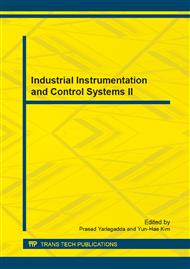p.1688
p.1694
p.1699
p.1703
p.1708
p.1713
p.1718
p.1722
p.1726
Fade Statistic Analysis of SC in Distributed Antenna System
Abstract:
Exact and closed form expressions for the average level crossing rate (LCR) and average fade duration (AFD) of the output signal envelope of selection diversity system are derived, assuming each branch is subject to independent but nonidentical composite fading in distributed antenna systems (DAS). Numerical results validate the derived expressions. It shows that DAS promise significant diversity gains over collocated multiple antenna system.
Info:
Periodical:
Pages:
1708-1712
Citation:
Online since:
July 2013
Authors:
Price:
Сopyright:
© 2013 Trans Tech Publications Ltd. All Rights Reserved
Share:
Citation:


